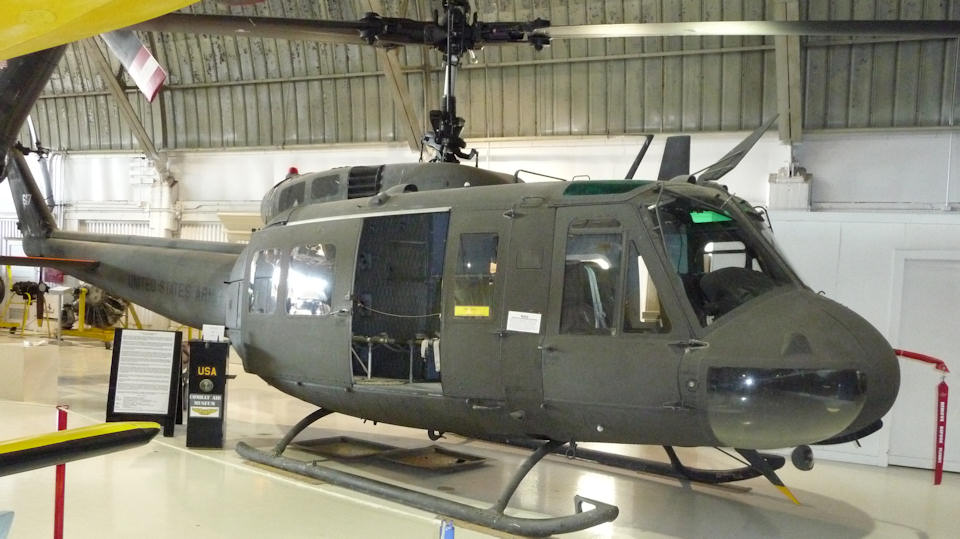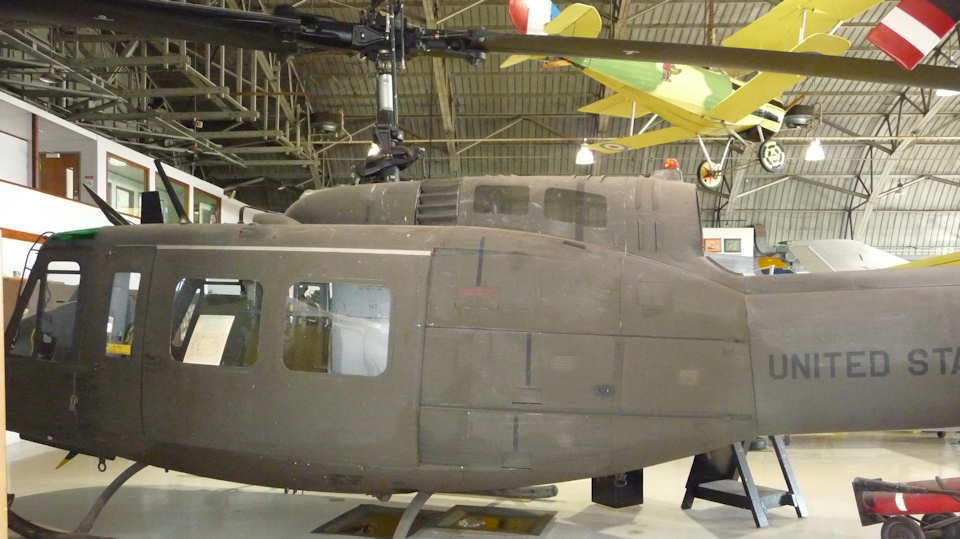The
Bell UH-1 series of helicopters were the most widely used and known helicopter
of the Vietnam War. Millions of television
viewers worldwide watched troops leaping from hovering UH-1s into battle
zones or watched others being loaded with battle casualties. The helicopters
were universally more commonly known as the “Huey” rather than
the official name of Iroquois.
In February 1955, Bell Aircraft Corporation won a competition to develop
and build a turbine-powered utility helicopter for the U.S. Army. The
new helicopter was designated Bell Model 204 and initially, the XH-40
under the US Air Force system. Three HX-40 prototypes were built. The
first prototype first flew October 20, 1956. The XH-40s were followed
by six YH-40 service test aircraft, all delivered by August 1958.
In 1956, US Army Aviation introduced its own designation system. The
XH-40 became the XHU-1, and the YH-40 became the YHU-1 with HU standing
for helicopter utility. It was this HU designation that gave birth to
the famous Huey nickname.
Nine pre-production aircraft, designated HU-1, were first delivered
in September 1958. By the end of 1959, the first production HU-1As were
delivered to the US Army. These were the first of over 10,000 military
Hueys built by Bell based on the Models 204, 205, and 212. Different
versions of the Huey flew with the US Army, Air Force, Navy, and Marines
as well as over 60 foreign countries. In the first decade of the 21st
Century the twin-turboshaft engine UH-1N flies with the US Air Force,
Navy and Marines, and UH-1Y with the Marines.
In January 1957, the Fort Worth, Texas, Helicopter Division of Bell
became the Bell Helicopter Corporation. In 1960, Textron Incorporated
bought Bell Helicopter Corporation, and renamed it the Bell Helicopter
Company. In January 1976, the name of the company was changed to Bell
Helicopter Textron, then in January 1982, to Bell Helicopter Textron,
Incorporated.
Under the Tri-Service Designation System of September 1962, the Iroquois
became the H-1. All HU-1As and HU-1Bs were re-designated UH-1As and UH-1Bs,
respectively.
The Huey went to war in April 1962, in Vietnam. US Army
Aviation and Medical Ambulance Companies initially flew UH-1As (HU-1A)
on MEDEVAC
(Medical Evacuation) missions. In October 1962, armed utility troop transport
HU-1As that became known as “slicks” arrived in South Vietnam.
By the end of the year, over 300 Hueys were in South Vietnam, and the
numbers would only grow during the war to eventually be in the thousands.
Marine Corps H-1s began operating in Vietnam in 1965, and Navy and Air
Force versions were in the war by 1966.
As later versions of the Huey were developed, the Army
began using the UH-1Bs and UH-1Cs primarily as gunships that carried
a wide variety of
weaponry. UH-1Ds and UH-1Hs were used primarily as “slicks” and
MEDEVAC choppers.
Hueys went to war again, in Iraq in 1991, and again as part of Operation
Iraqi Freedom in 2003. With the exception of the twin-turbine UH-1N and
UH-1Y, most Hueys have been replaced by the Sikorsky H-60 series of helicopters.
Bell Helicopter Company, Forth Worth, Texas, originally built this UH-1H
as an UH-1D-BF for the U.S. Army. It differs from earlier models of the
UH-1 in its larger cabin and more powerful engine. The earlier models
could accommodate two crew members and seven troops or three litters.
The H version could carry two or three crew members plus 12 to 15 passengers
or six litters. Compare the size of the crew cab door on this Huey to
the second Huey in our collection. Over 2,000 UH-1Ds were built. Many
were upgraded to UH-1H standards, and 3,573 UH-1Hs were built for the
US Army.
Combat Air Museum acquired this helicopter in November 1995. Its last
operational unit was with the 108th Aviation Battalion, Kansas Army National
Guard, immediately south of this Museum.
This helicopter
is on loan from the US Army Tank-automotive and Armaments Command, Warren,
Michigan.







